Abstract
Pilot appraisals of the activities of a selected group of 4-quinolinemethanols against acute Plasmodium falciparum infections in owl monkeys indicated that compounds of this class are equally active against infections with chloroquine-resistant and chloroquine-susceptible strains and that this efficacy is not compromised by concomitant resistance to pyrimethamine, and in addition, identified three derivatives with outstanding activity (WR-226,253; WR-142,490; and WR-184,806). WR-142,490, the second 4-quinolinemethanol evaluated in the above model, was five times as active as chloroquine against infections with the chloroquine-susceptible, pyrimethamine-resistant strain and had a much larger therapeutic index. Expanded evaluations designed to support projected studies in human volunteers provided full confirmation of the pilot appraisals and in addition showed: (i) that the activity of WR-142,490 was a function of the total dose delivered, single doses being as effective as three or seven fractional doses administered over as many days; (ii) that intravenous administration of this agent was feasible and effective; and (iii) that the compound was at least as active against infections with P. vivax as against infections with P. falciparum. Companion studies in rhesus monkeys infected with P. cynomolgi showed that WR-142,490 lacked prophylactic or radical curative activity, but that it was as effective as chloroquine as a companion to primaquine in a combination curative drug regimen. The results of human volunteer and field trials agree well with comparable segments of these experimental evaluations.
Full text
PDF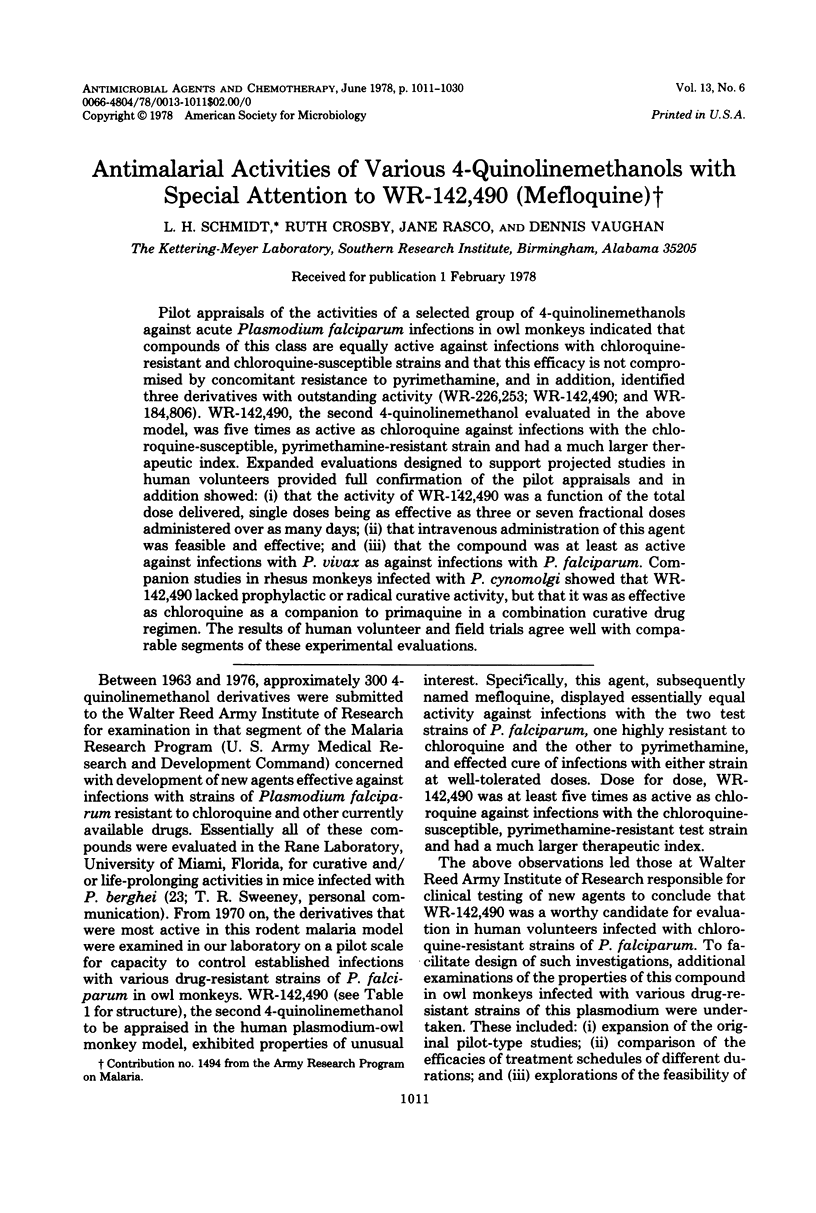
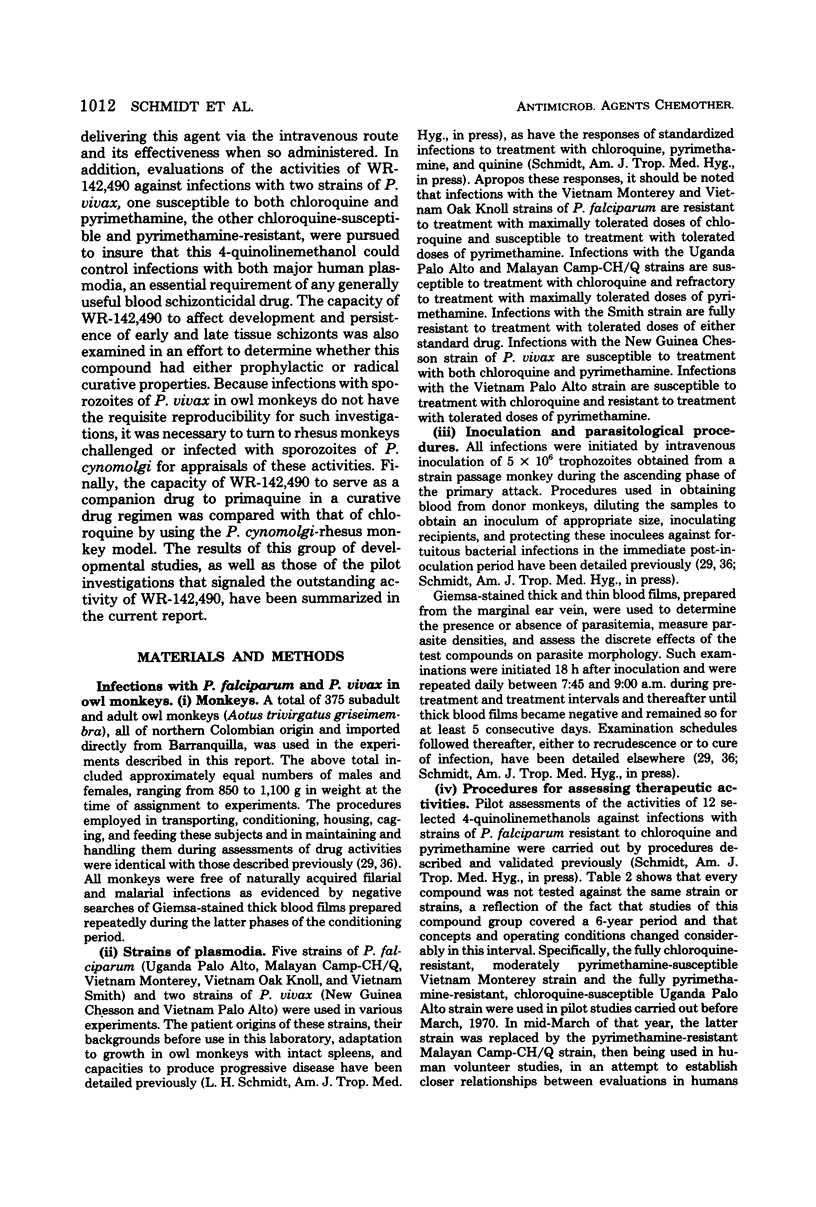
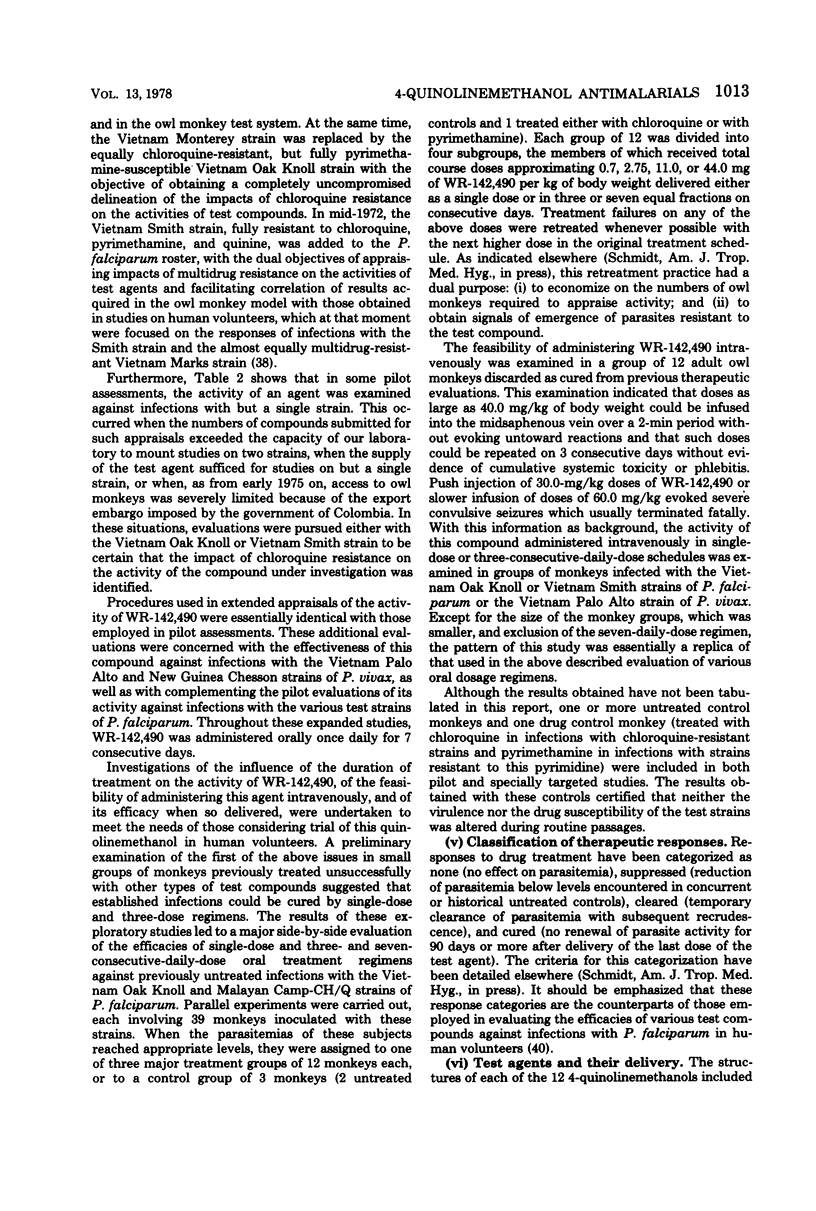
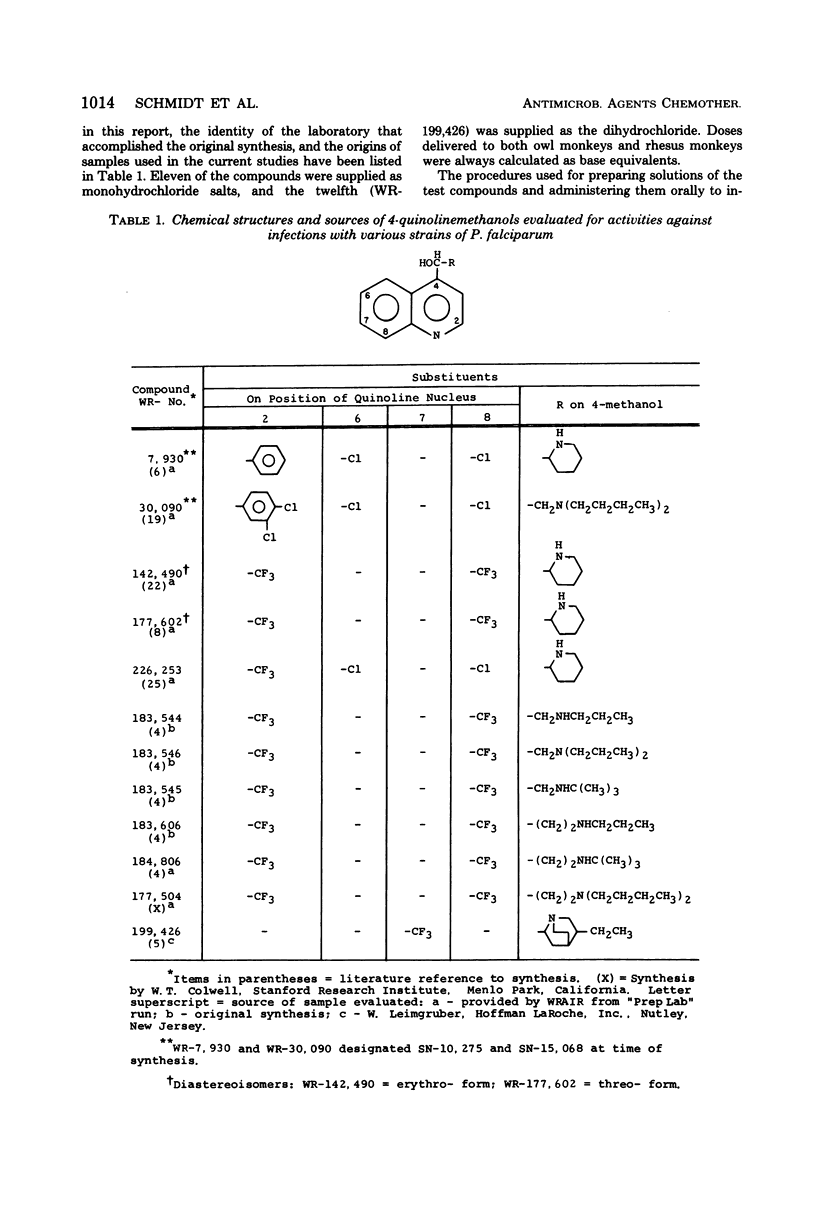
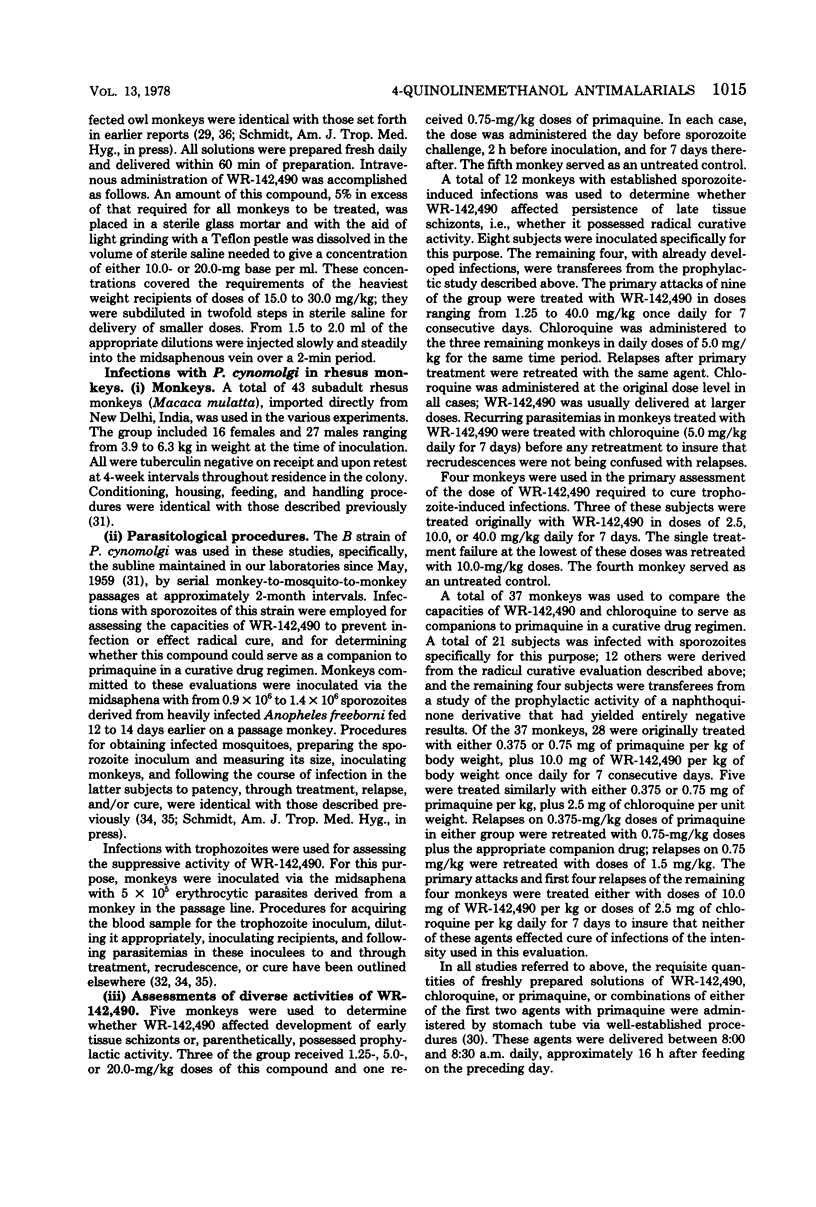
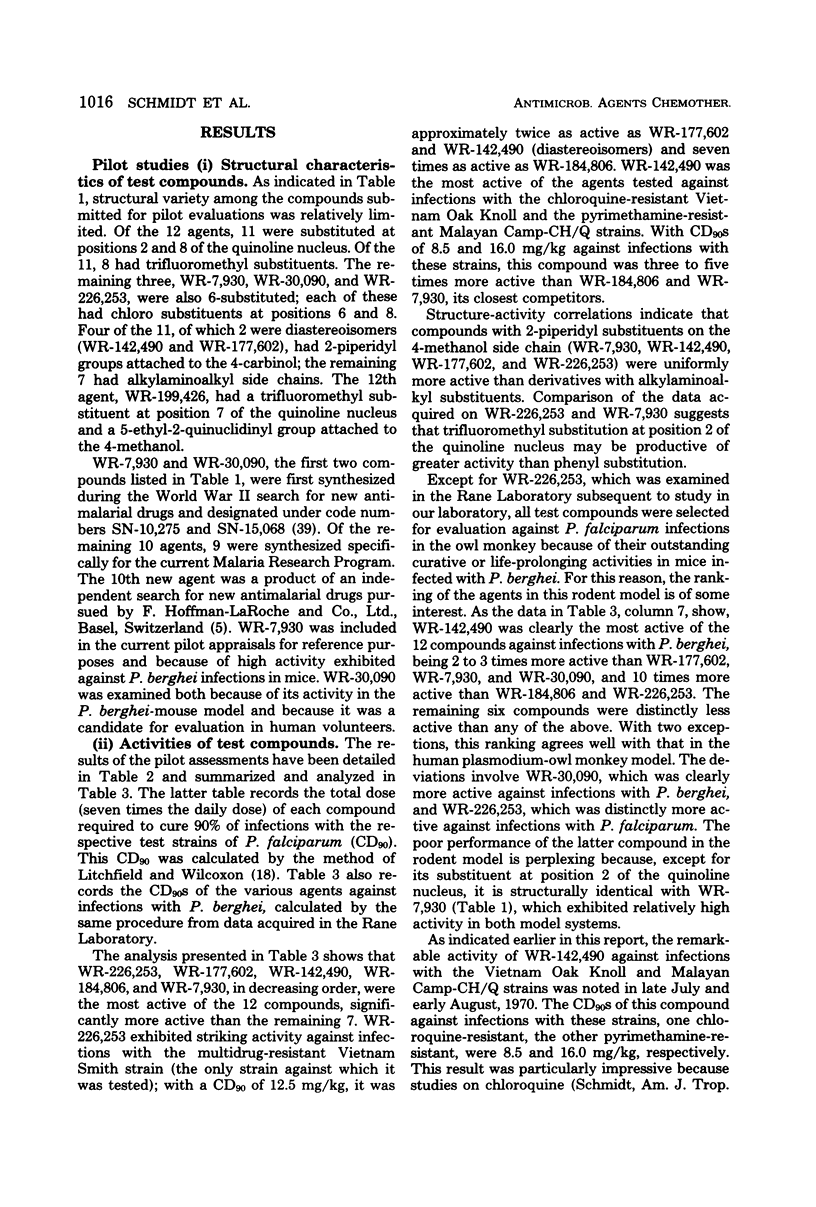
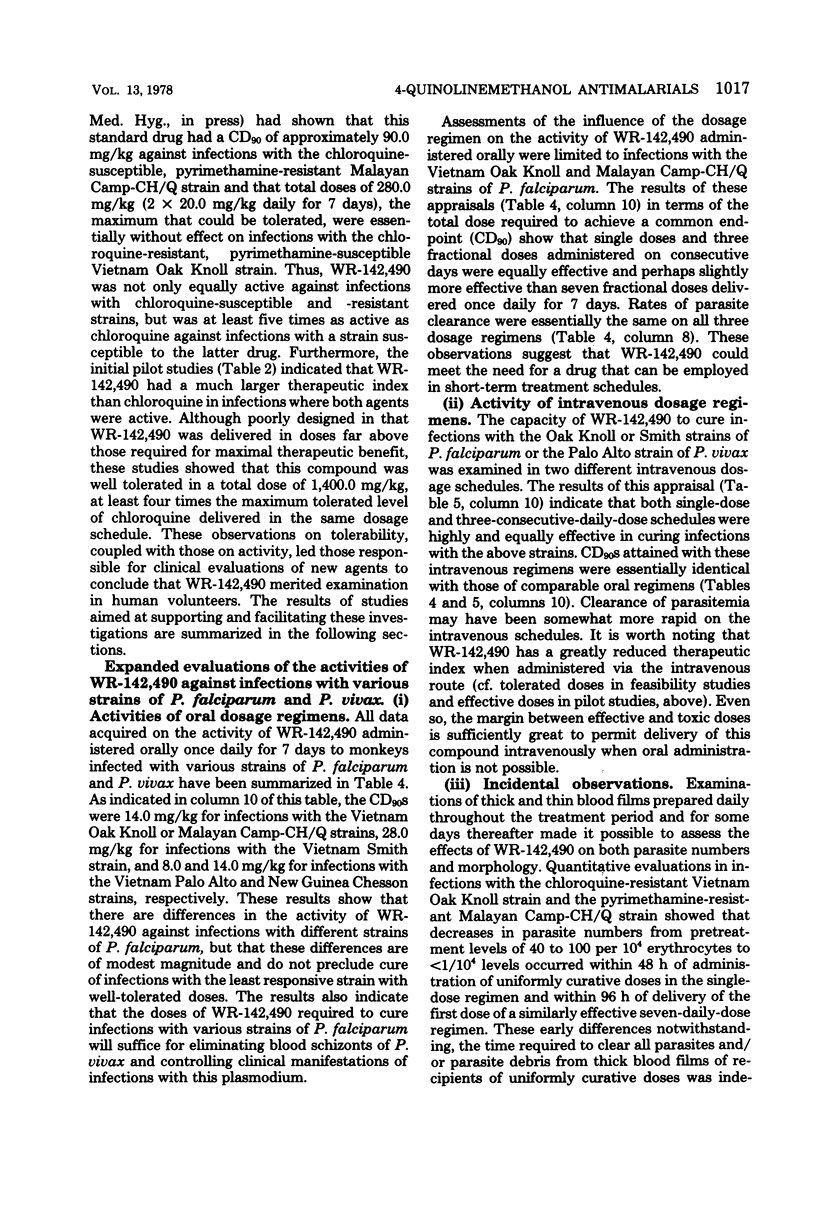
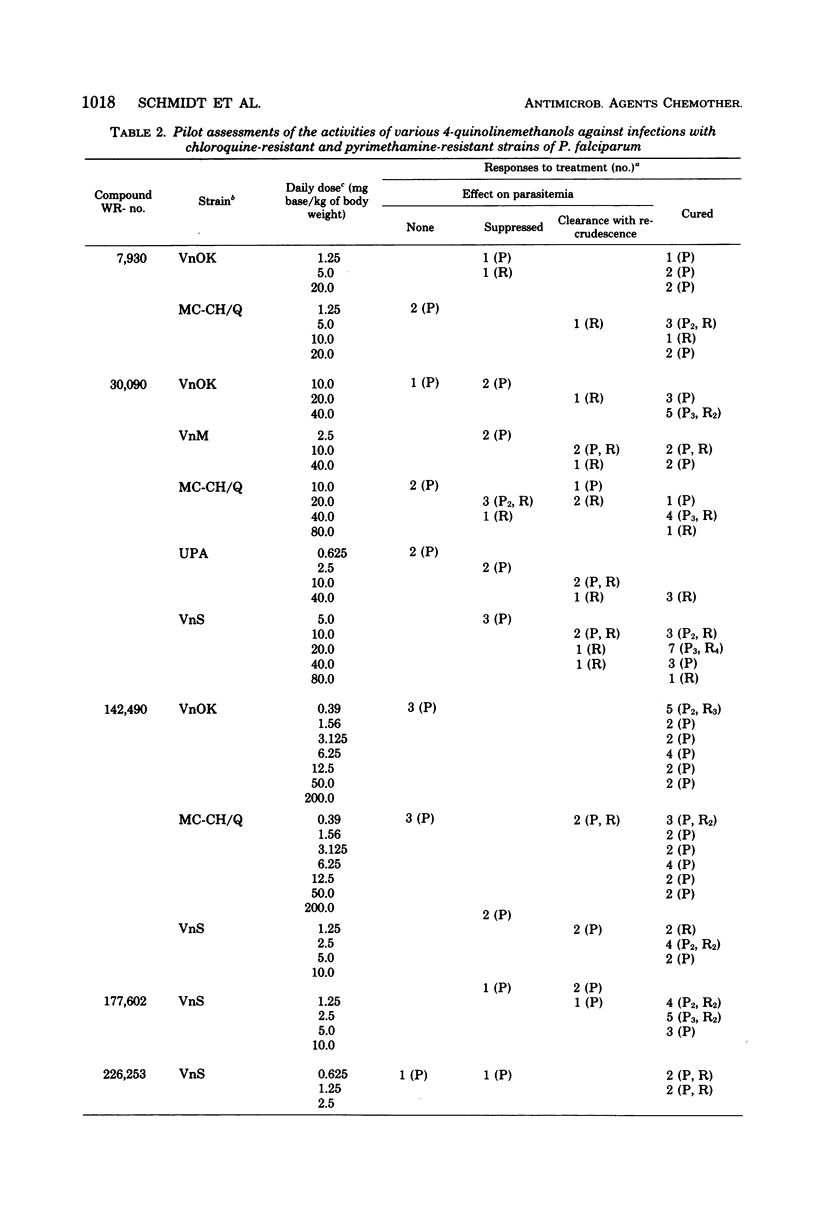
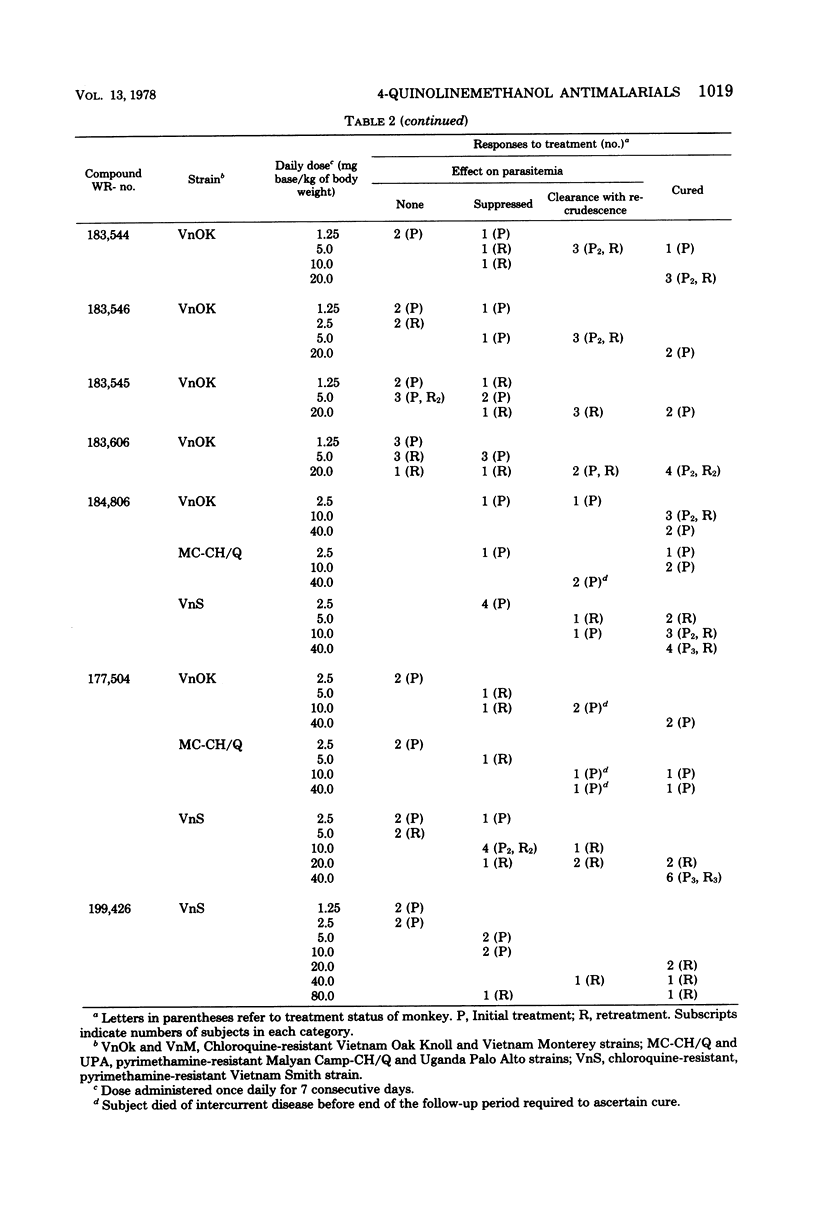
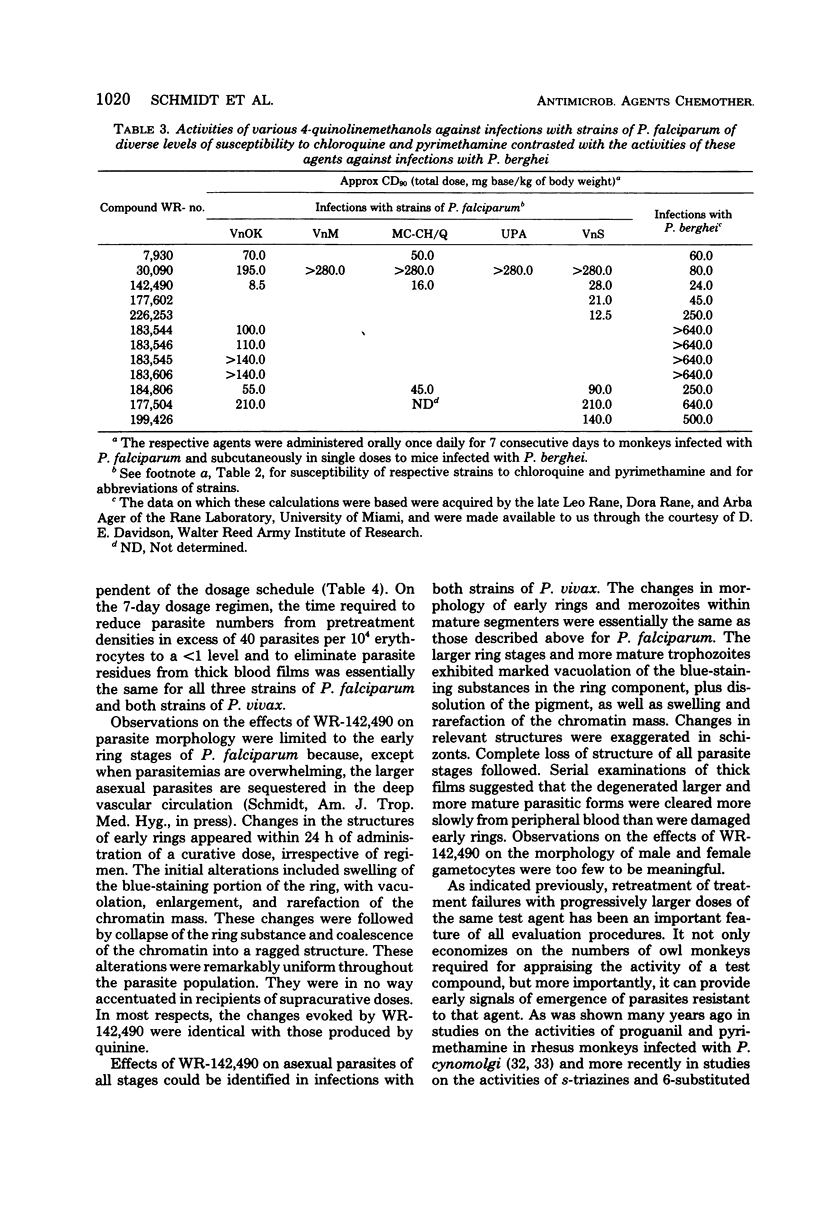
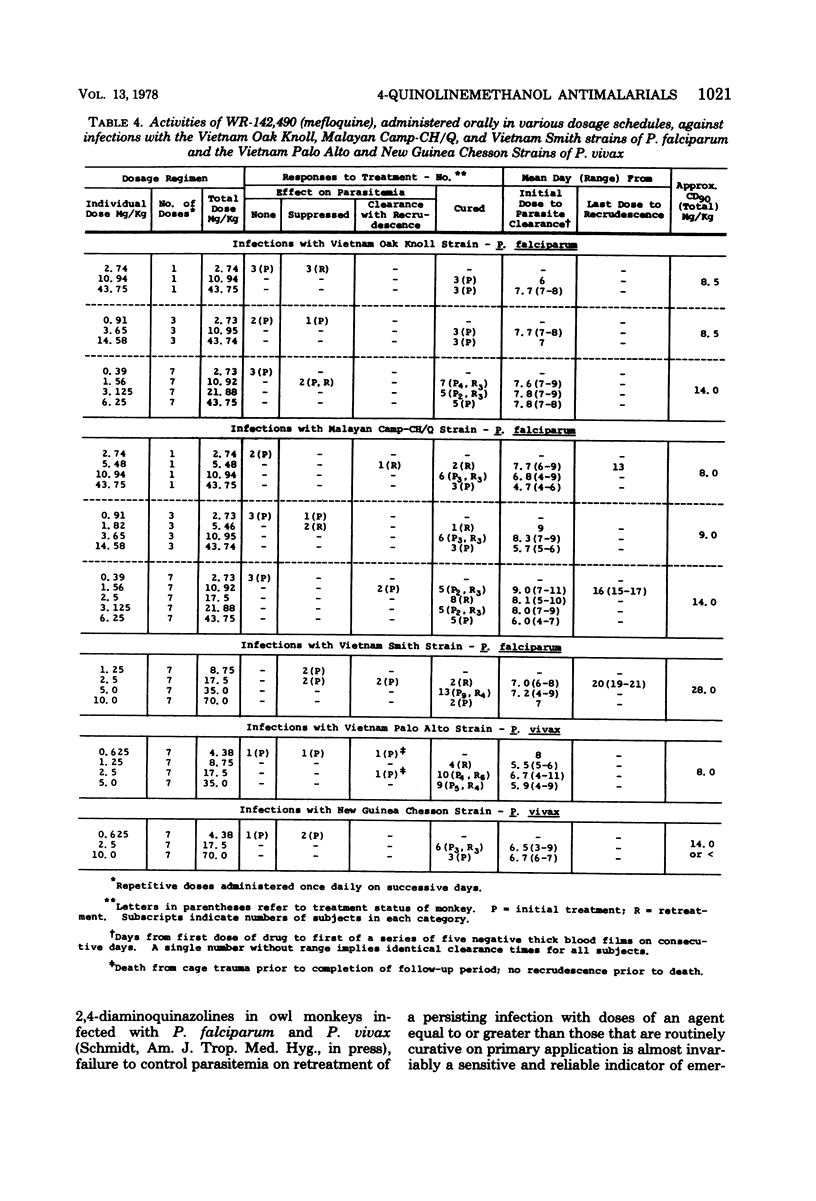
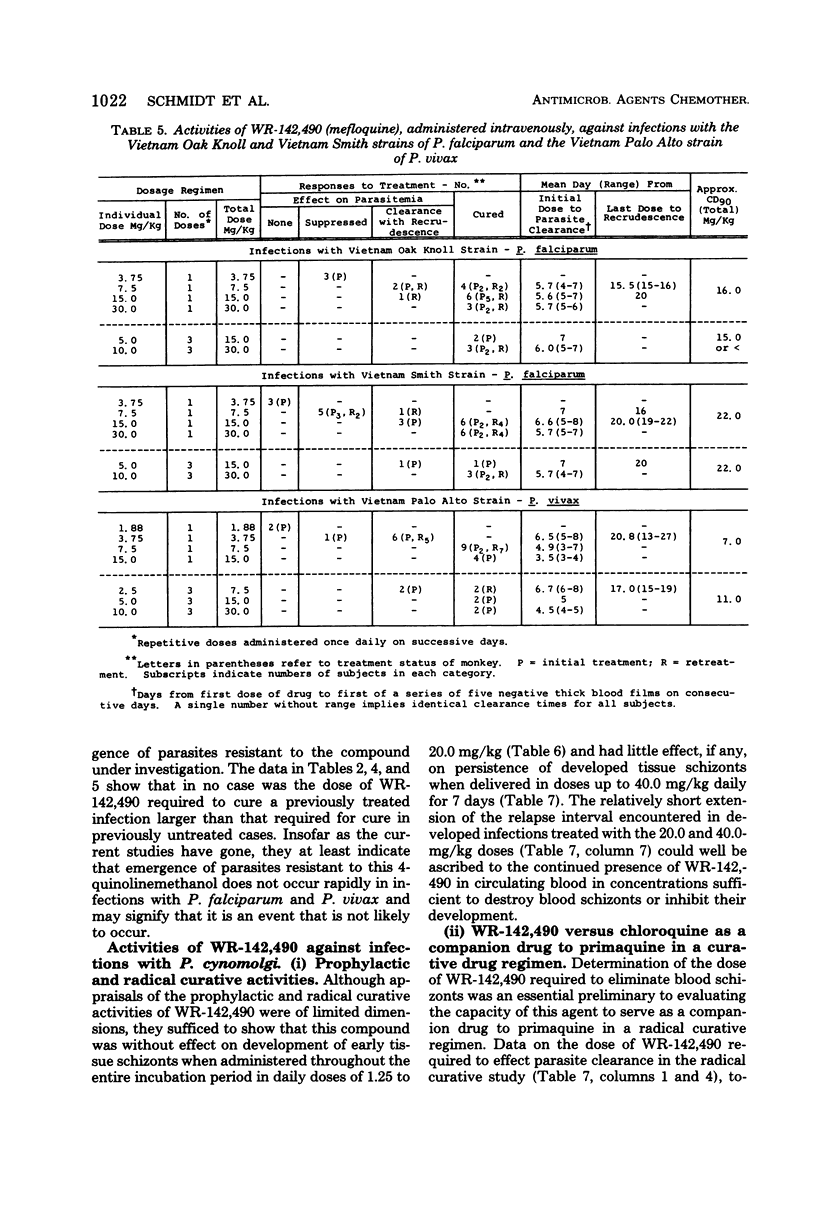
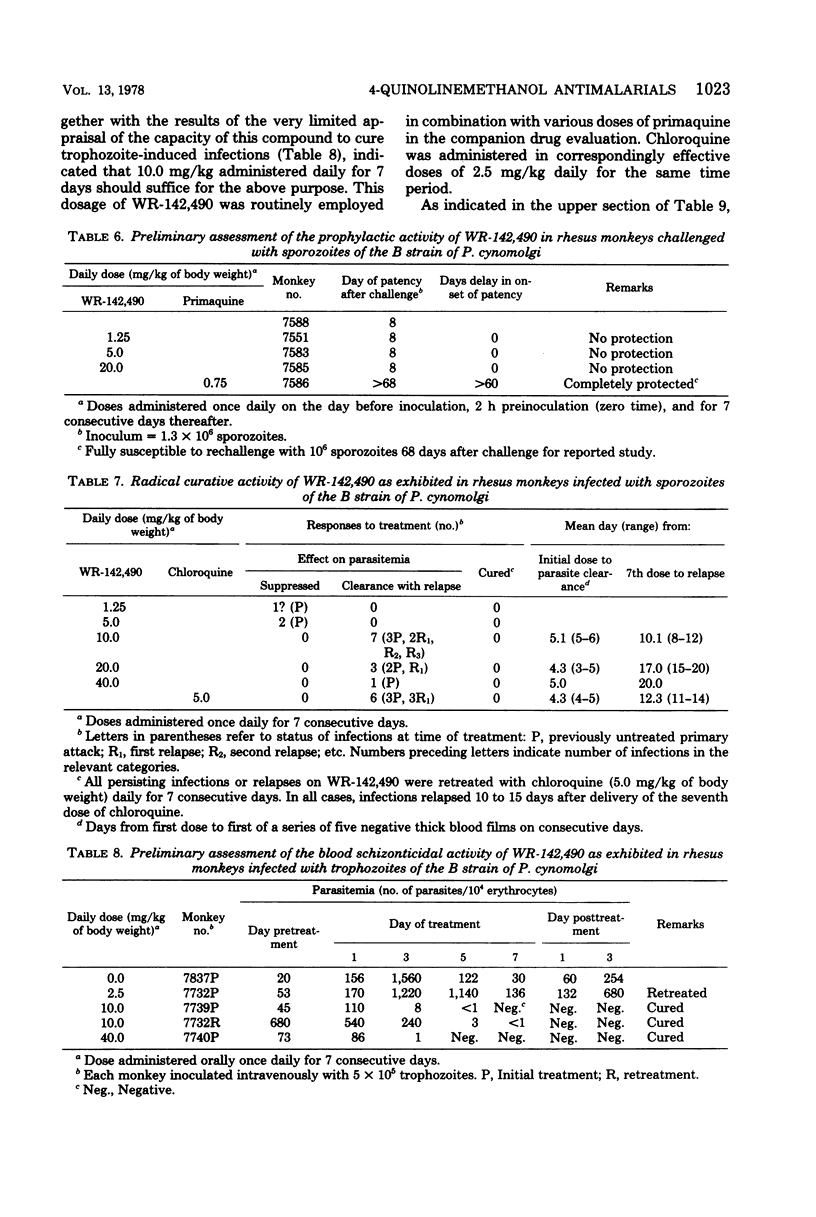
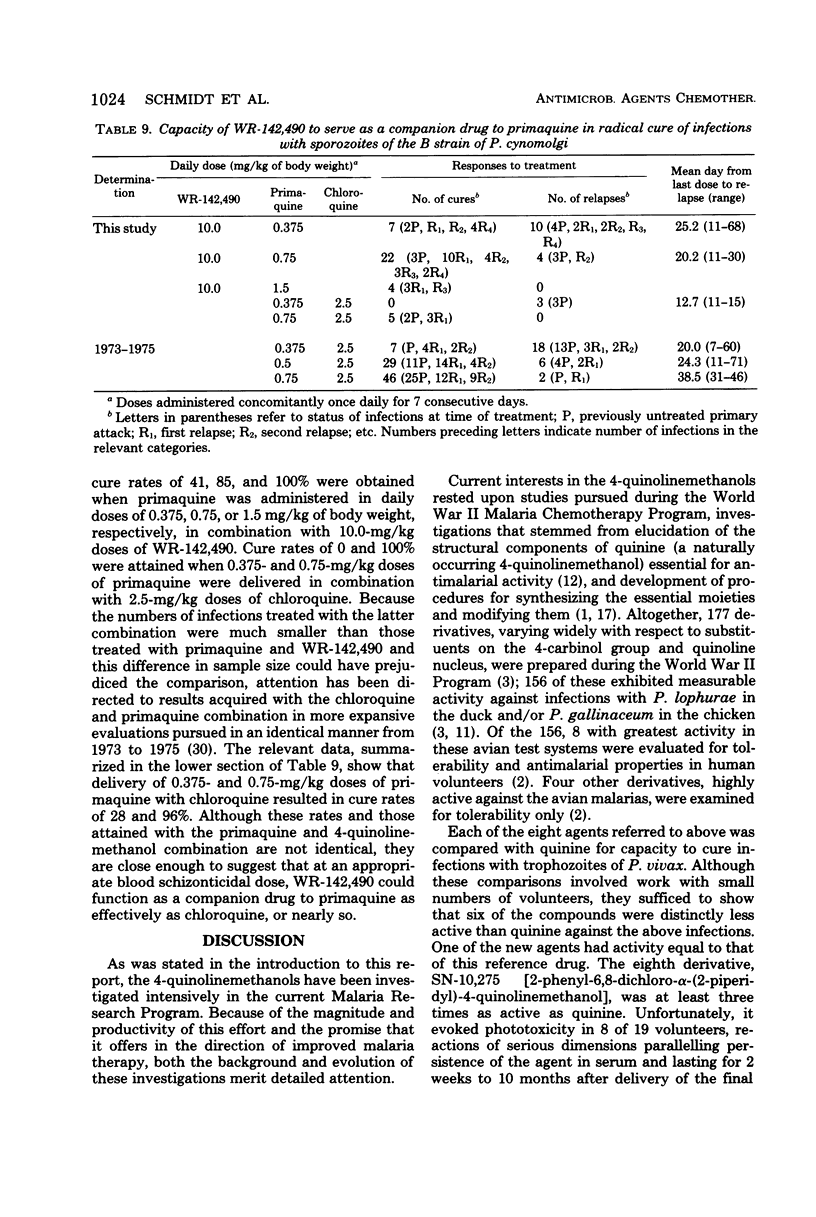
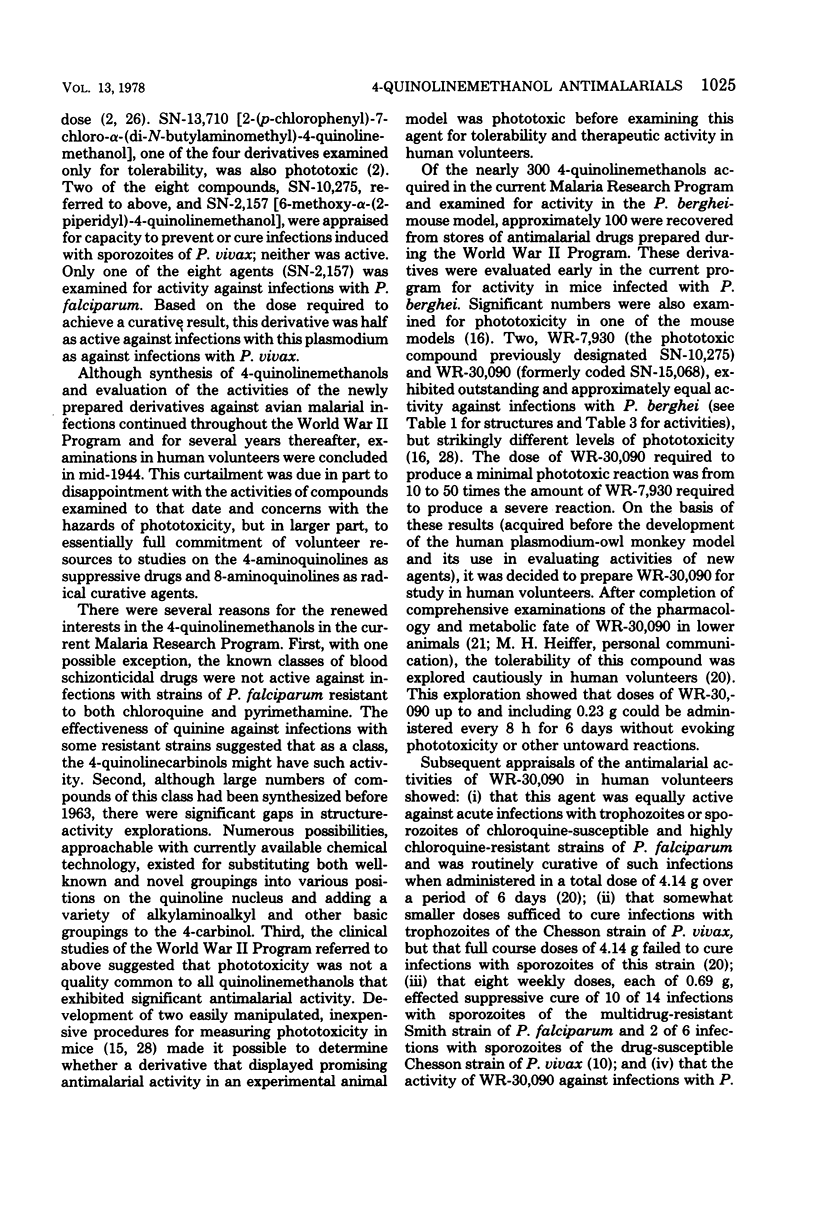
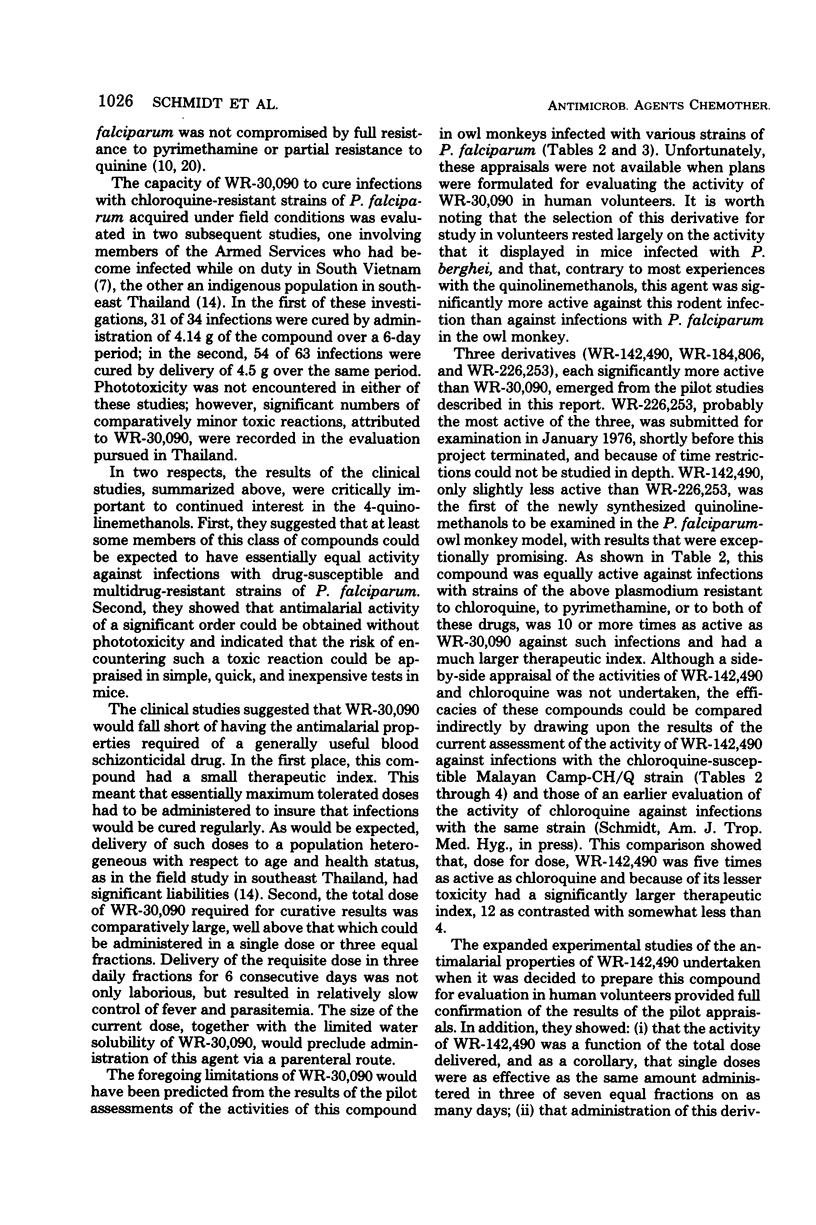
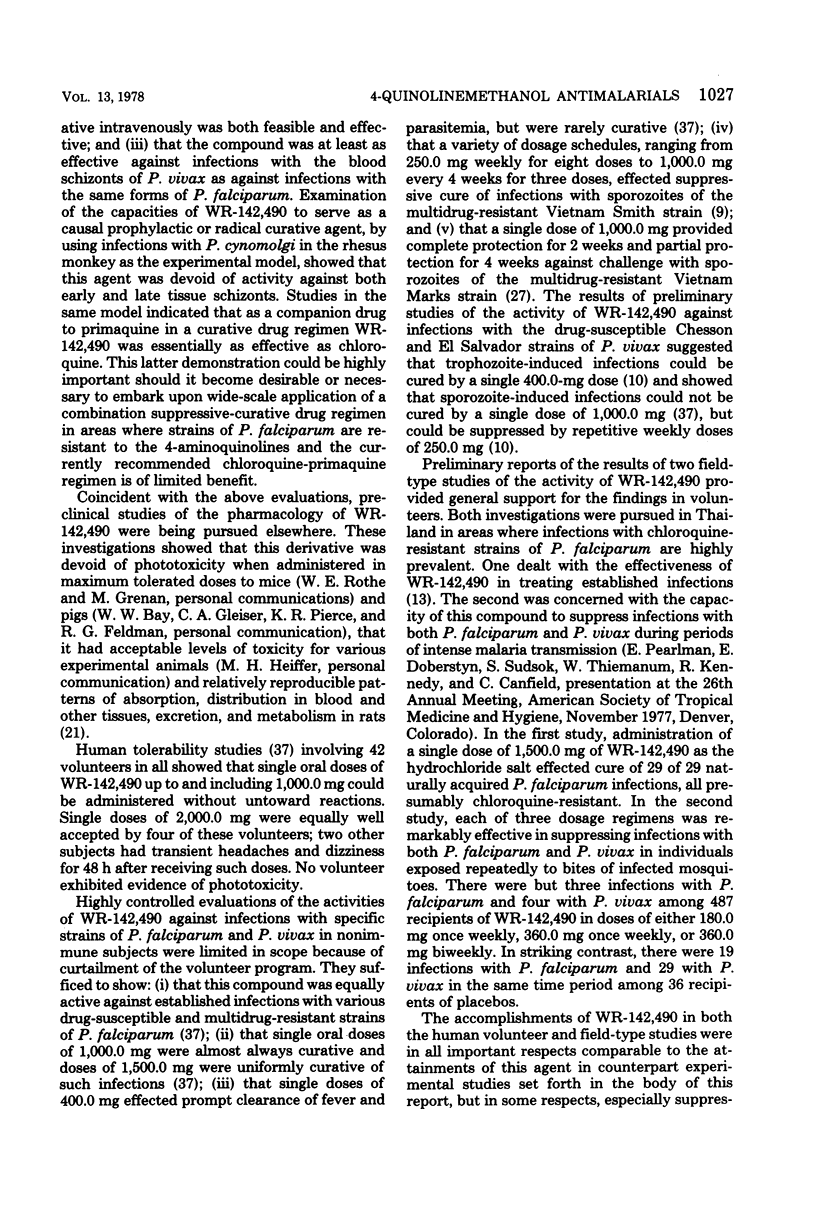
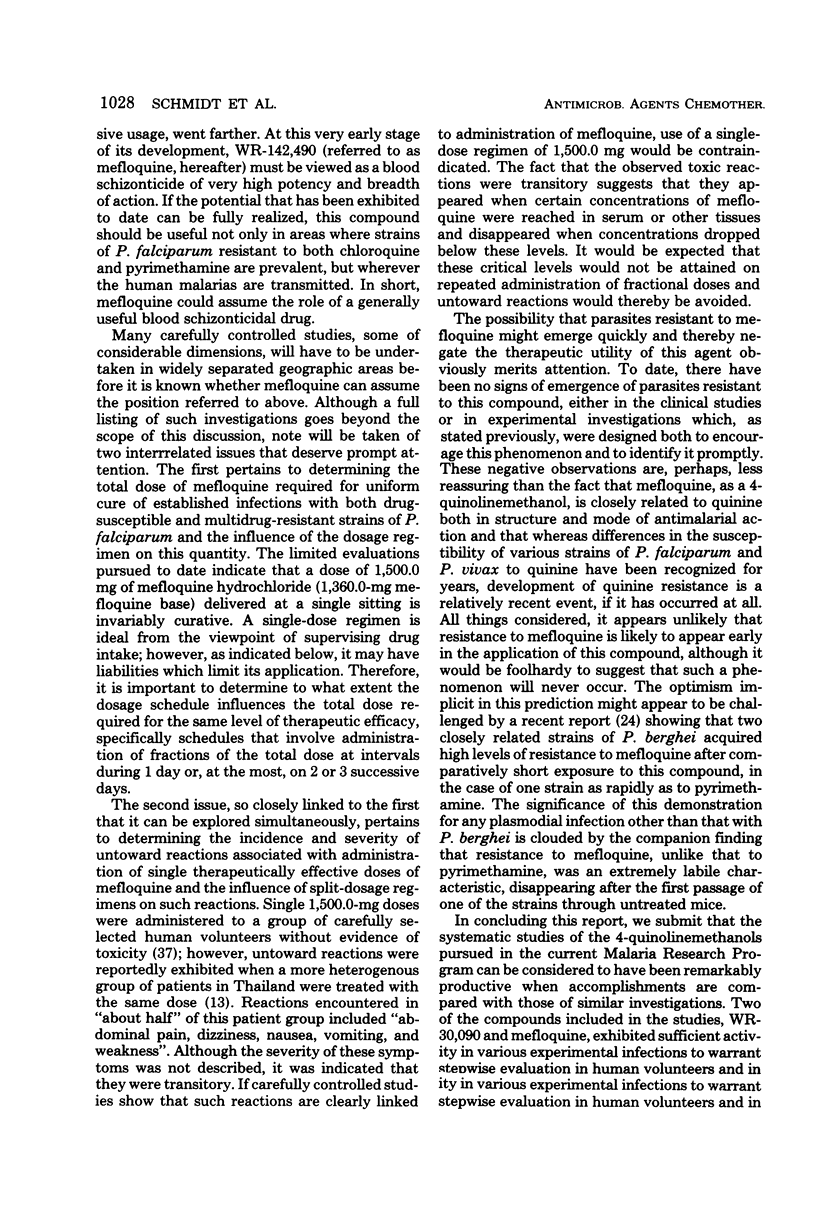
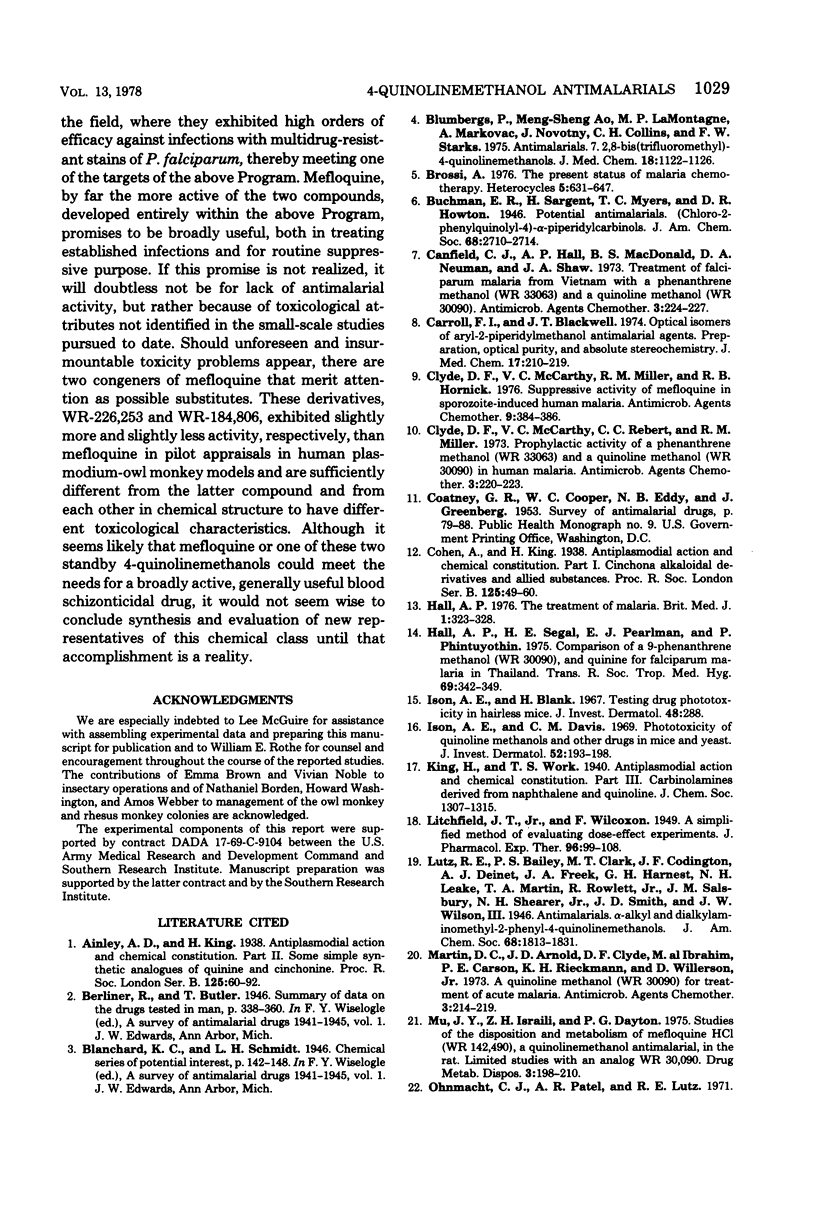
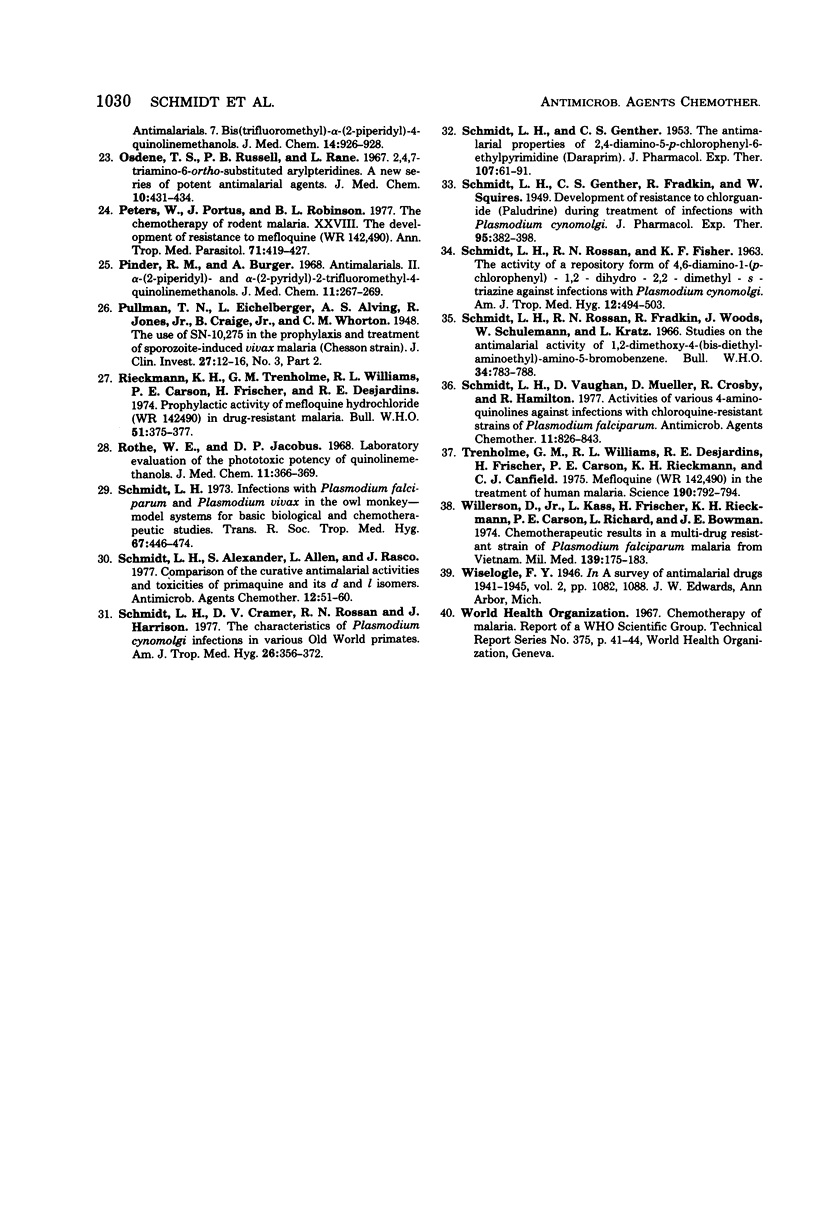
Selected References
These references are in PubMed. This may not be the complete list of references from this article.
- Canfield C. J., Hall A. P., MacDonald B. S., Neuman D. A., Shaw J. A. Treatment of falciparum malaria from Vietnam with a phenanthrene methanol (WR 33063) and a quinoline methanol (WR 30090). Antimicrob Agents Chemother. 1973 Feb;3(2):224–227. doi: 10.1128/aac.3.2.224. [DOI] [PMC free article] [PubMed] [Google Scholar]
- Carroll F. I., Blackwell J. T. Optical isomers of aryl-2-piperidylmethanol antimalarial agents. Preparation, optical purity, and absolute stereochemistry. J Med Chem. 1974 Feb;17(2):210–219. doi: 10.1021/jm00248a015. [DOI] [PubMed] [Google Scholar]
- Clyde D. F., McCarthy V. C., Miller R. M., Hornick R. B. Suppressive activity of mefloquine in sporozoite-induced human malaria. Antimicrob Agents Chemother. 1976 Mar;9(3):384–386. doi: 10.1128/aac.9.3.384. [DOI] [PMC free article] [PubMed] [Google Scholar]
- Clyde D. F., McCarthy V. C., Rebert C. C., Miller R. M. Prophylactic activity of a phenanthrene methanol (WR 33063) and a quinoline methanol (WR 30090) in human malaria. Antimicrob Agents Chemother. 1973 Feb;3(2):220–223. doi: 10.1128/aac.3.2.220. [DOI] [PMC free article] [PubMed] [Google Scholar]
- Hall A. P., Segal H. E., Pearlman E. J., Phintuyothin P. Comparison of a 9-phenanthrene methanol (WR33063), a 4-quinoline methanol (WR30090), and quinine for falciparum malaria in Thailand. Trans R Soc Trop Med Hyg. 1975;69(3):342–349. doi: 10.1016/0035-9203(75)90129-7. [DOI] [PubMed] [Google Scholar]
- Hall A. P. The treatment of malaria. Br Med J. 1976 Feb 7;1(6005):323–328. doi: 10.1136/bmj.1.6005.323. [DOI] [PMC free article] [PubMed] [Google Scholar]
- Ison A. E., Davis C. M. Phototoxicity of quinoline methanols and other drugs in mice and yeast. J Invest Dermatol. 1969 Feb;52(2):193–198. [PubMed] [Google Scholar]
- Martin D. C., Arnold J. D., Clyde D. F., al-Ibrahim M., Carson P. E., Rieckmann K. H., Willerson D., Jr A quinoline methanol (WR 30090) for treatment of acute malaria. Antimicrob Agents Chemother. 1973 Feb;3(2):214–219. doi: 10.1128/aac.3.2.214. [DOI] [PMC free article] [PubMed] [Google Scholar]
- Mu J. Y., Israili Z. H., Dayton P. G. Studies of the disposition and metabolism of mefloquine HCl (WR 142,490), a quinolinemethanol antimalarial, in the rat. Limited studies with an analog, WR 30,090. Drug Metab Dispos. 1975 May-Jun;3(3):198–210. [PubMed] [Google Scholar]
- Peters W., Portus J., Robinson B. L. The chemotherapy of rodent malaria, XXVIII. The development of resistance to mefloquine (WR 142,490). Ann Trop Med Parasitol. 1977 Dec;71(4):419–427. doi: 10.1080/00034983.1977.11687207. [DOI] [PubMed] [Google Scholar]
- Pinder R. M., Burger A. Antimalarials. II. Alpha-(2-piperidyl)-and alpha-(2-pyridyl)-2-trifluoromethyl-4-quinolinemethanols. J Med Chem. 1968 Mar;11(2):267–269. doi: 10.1021/jm00308a017. [DOI] [PubMed] [Google Scholar]
- Pullman T. N., Eichelberger L., Alving A. S., Jones R., Craige B., Whorton C. M. THE USE OF SN-10,275 IN THE PROPHYLAXIS AND TREATMENT OF SPOROZOITE-INDUCED VIV AX MALARIA (CHESSON STRAIN). J Clin Invest. 1948 May;27(3 Pt 2):12–16. doi: 10.1172/JCI101949. [DOI] [PMC free article] [PubMed] [Google Scholar]
- Rieckmann K. H., Trenholme G. M., Williams R. L., Carson P. E., Frischer H., Desjardins R. E. Prophylactic activity of mefloquine hydrochloride (WR 142490) in drug-resistant malaria. Bull World Health Organ. 1974;51(4):375–377. [PMC free article] [PubMed] [Google Scholar]
- Rothe W. E., Jacobus D. P. Laboratory evaluation of the phototoxic potency of quinolinemethanols. J Med Chem. 1968 Mar;11(2):366–368. doi: 10.1021/jm00308a041. [DOI] [PubMed] [Google Scholar]
- SCHMIDT L. H., GENTHER C. S. The antimalarial properties of 2, 4-diamino-5-p-chlorophenyl-6-ethylpyrimidine, daraprim. J Pharmacol Exp Ther. 1953 Jan;107(1):61–91. [PubMed] [Google Scholar]
- SCHMIDT L. H., ROSSAN R. N., FISHER K. F. THE ACTIVITY OF A REPOSITORY FORM OF 4,6-DIAMINO-1(P-CHLOROPHENYL)-1,2-DIHYDRO-2,2-DIMETHYL-S-TRIAZINE AGAINST INFECTIONS WITH PLASMODIUM CYNOMOLGI. Am J Trop Med Hyg. 1963 Jul;12:494–503. doi: 10.4269/ajtmh.1963.12.494. [DOI] [PubMed] [Google Scholar]
- Schmidt L. H., Alexander S., Allen L., Rasco J. Comparison of the curative antimalarial activities and toxicities of primaquine and its d and l isomers. Antimicrob Agents Chemother. 1977 Jul;12(1):51–60. doi: 10.1128/aac.12.1.51. [DOI] [PMC free article] [PubMed] [Google Scholar]
- Schmidt L. H., Cramer D. V., Rossan R. N., Harrison J. The characteristics of Plasmodium cynomolgi infections in various old world primates. Am J Trop Med Hyg. 1977 May;26(3):356–372. doi: 10.4269/ajtmh.1977.26.356. [DOI] [PubMed] [Google Scholar]
- Schmidt L. H. Infections with Plasmodium falciparum and Plasmodium vivax in the owl monkey--model systems for basic biological and chemotherapeutic studies. Trans R Soc Trop Med Hyg. 1973;67(4):446–474. doi: 10.1016/0035-9203(73)90077-1. [DOI] [PubMed] [Google Scholar]
- Schmidt L. H., Rossan R. N., Fradkin R., Woods J., Schulemann W., Kratz L. Studies on the antimalarial activity of 1,2-dimethoxy-4-(bis-diethylaminoethyl)-amino-5-bromobenzene. Bull World Health Organ. 1966;34(5):783–788. [PMC free article] [PubMed] [Google Scholar]
- Schmidt L. H., Vaughan D., Mueller D., Crosby R., Hamilton R. Activities of various 4-aminoquinolines against infections with chloroquine-resistant strains of Plasmodium falciparum. Antimicrob Agents Chemother. 1977 May;11(5):826–843. doi: 10.1128/aac.11.5.826. [DOI] [PMC free article] [PubMed] [Google Scholar]
- Trenholme C. M., Williams R. L., Desjardins R. E., Frischer H., Carson P. E., Rieckmann K. H., Canfield C. J. Mefloquine (WR 142,490) in the treatment of human malaria. Science. 1975 Nov 21;190(4216):792–794. doi: 10.1126/science.1105787. [DOI] [PubMed] [Google Scholar]
- Willerson D., Jr, Rieckmann K. H., Kass L., Carson P. E., Frischer H., Richard L., Bowman J. E. Chemotherapeutic results in a multi-drug resistant strain of Plasmodium falciparum malaria from Vietnam. Mil Med. 1974 Mar;139(3):175–182. [PubMed] [Google Scholar]


